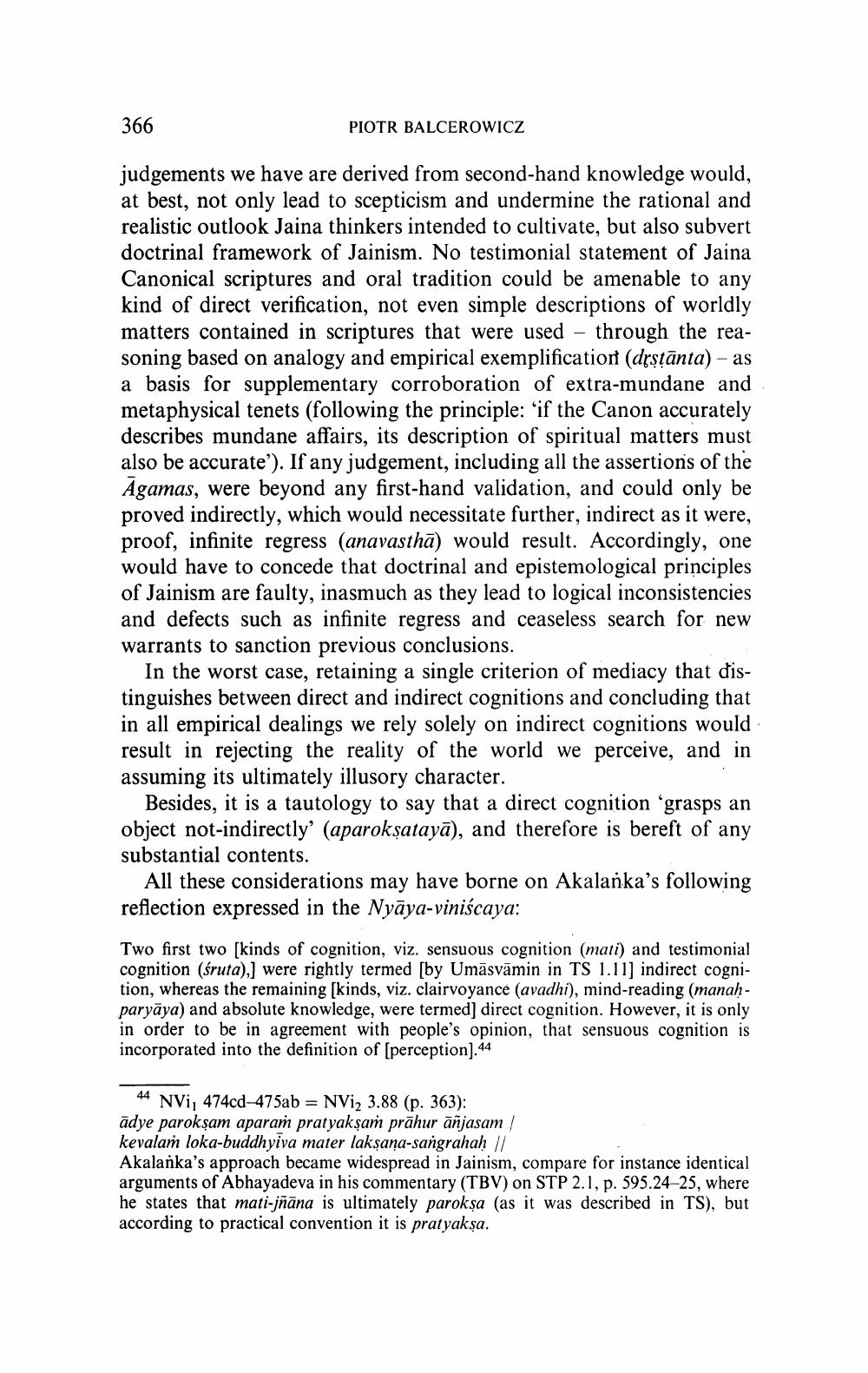________________
366
PIOTR BALCEROWICZ
judgements we have are derived from second-hand knowledge would, at best, not only lead to scepticism and undermine the rational and realistic outlook Jaina thinkers intended to cultivate, but also subvert doctrinal framework of Jainism. No testimonial statement of Jaina Canonical scriptures and oral tradition could be amenable to any kind of direct verification, not even simple descriptions of worldly matters contained in scriptures that were used – through the reasoning based on analogy and empirical exemplification (drstānta) - as a basis for supplementary corroboration of extra-mundane and metaphysical tenets (following the principle: 'if the Canon accurately describes mundane affairs, its description of spiritual matters must also be accurate'). If any judgement, including all the assertions of the Agamas, were beyond any first-hand validation, and could only be proved indirectly, which would necessitate further, indirect as it were, proof, infinite regress (anavasthā) would result. Accordingly, one would have to concede that doctrinal and epistemological principles of Jainism are faulty, inasmuch as they lead to logical inconsistencies and defects such as infinite regress and ceaseless search for new warrants to sanction previous conclusions
In the worst case, retaining a single criterion of mediacy that distinguishes between direct and indirect cognitions and concluding that in all empirical dealings we rely solely on indirect cognitions would result in rejecting the reality of the world we perceive, and in assuming its ultimately illusory character.
Besides, it is a tautology to say that a direct cognition 'grasps an object not-indirectly' (aparoksatayā), and therefore is bereft of any substantial contents.
All these considerations may have borne on Akalanka's following reflection expressed in the Nyāya-viniscaya:
Two first two [kinds of cognition, viz. sensuous cognition (mati) and testimonial cognition (śruta),] were rightly termed [by Umāsvāmin in TS 1.11] indirect cognition, whereas the remaining [kinds, viz. clairvoyance (avadhi), mind-reading (manahparyāya) and absolute knowledge, were termed) direct cognition. However, it is only in order to be in agreement with people's opinion, that sensuous cognition is incorporated into the definition of (perception].44
44 NVi, 474cd-475ab = NVi, 3.88 (p. 363): ādye parokşam aparam pratyakşam prāhur āñjasam / kevala loka-buddhyiva mater laksana-sangrahah // Akalanka's approach became widespread in Jainism, compare for instance identical arguments of Abhayadeva in his commentary (TBV) on STP 2.1, p. 595.24-25, where he states that mati-jñāna is ultimately paroksa (as it was described in TS), but according to practical convention it is pratyakşa.




